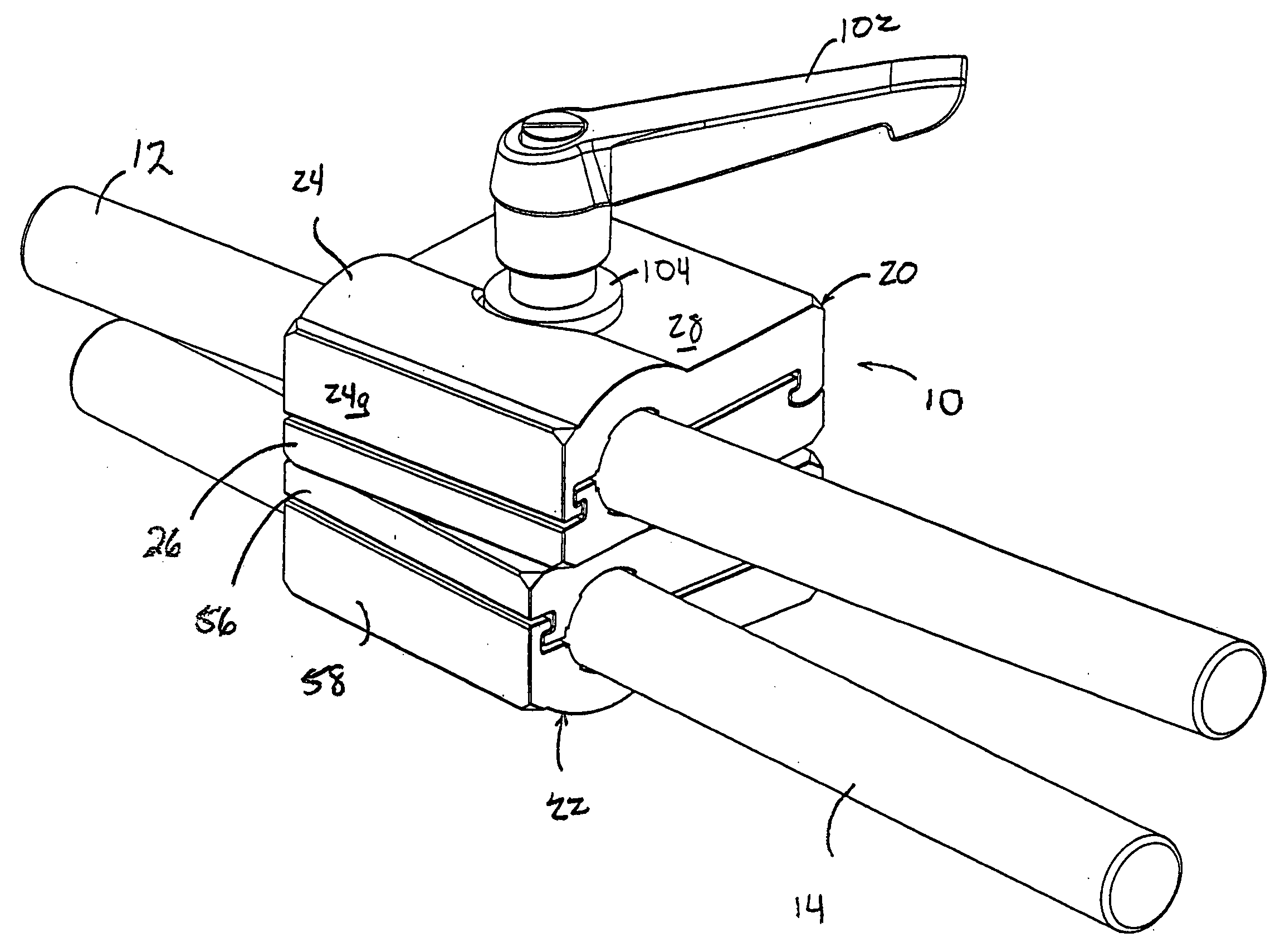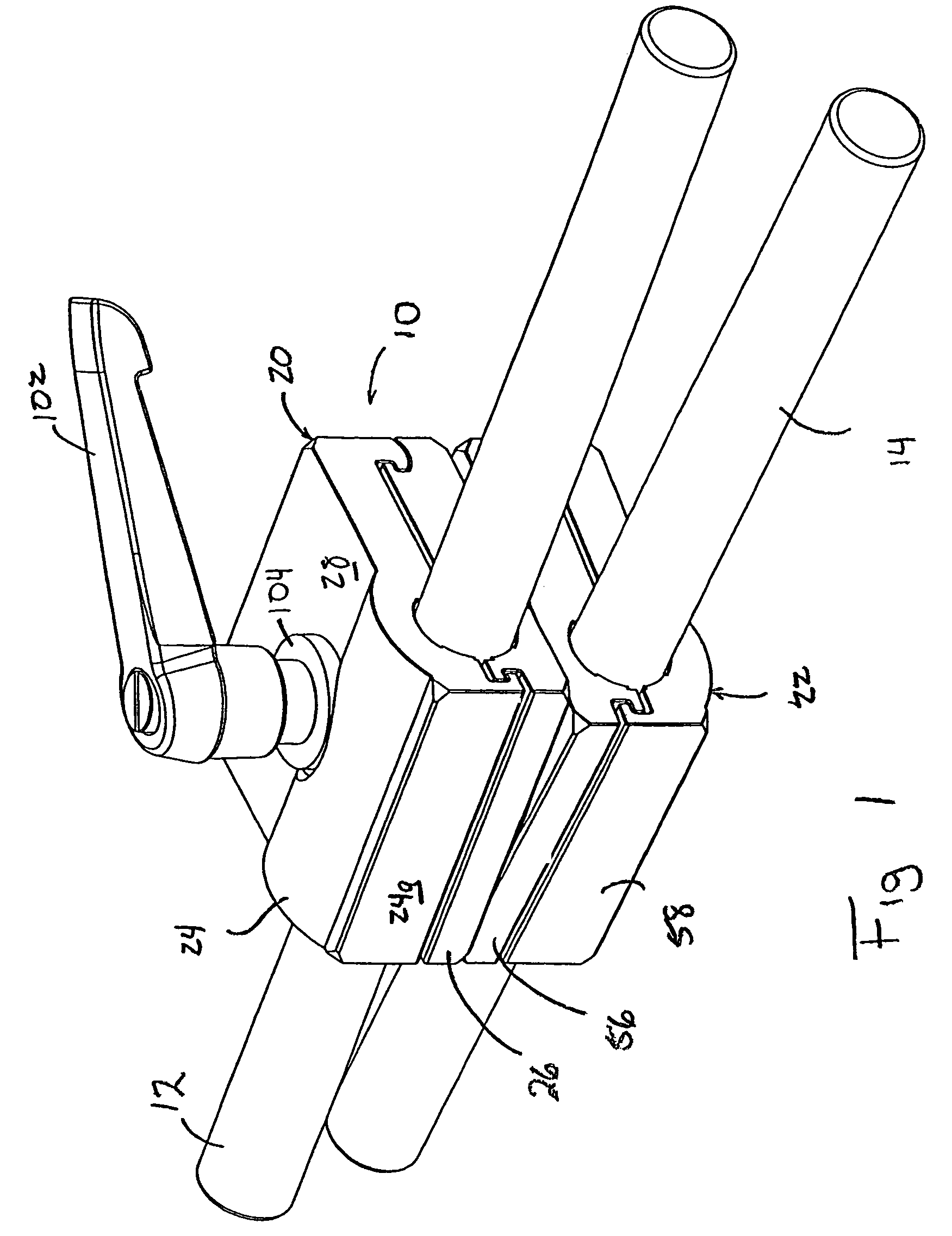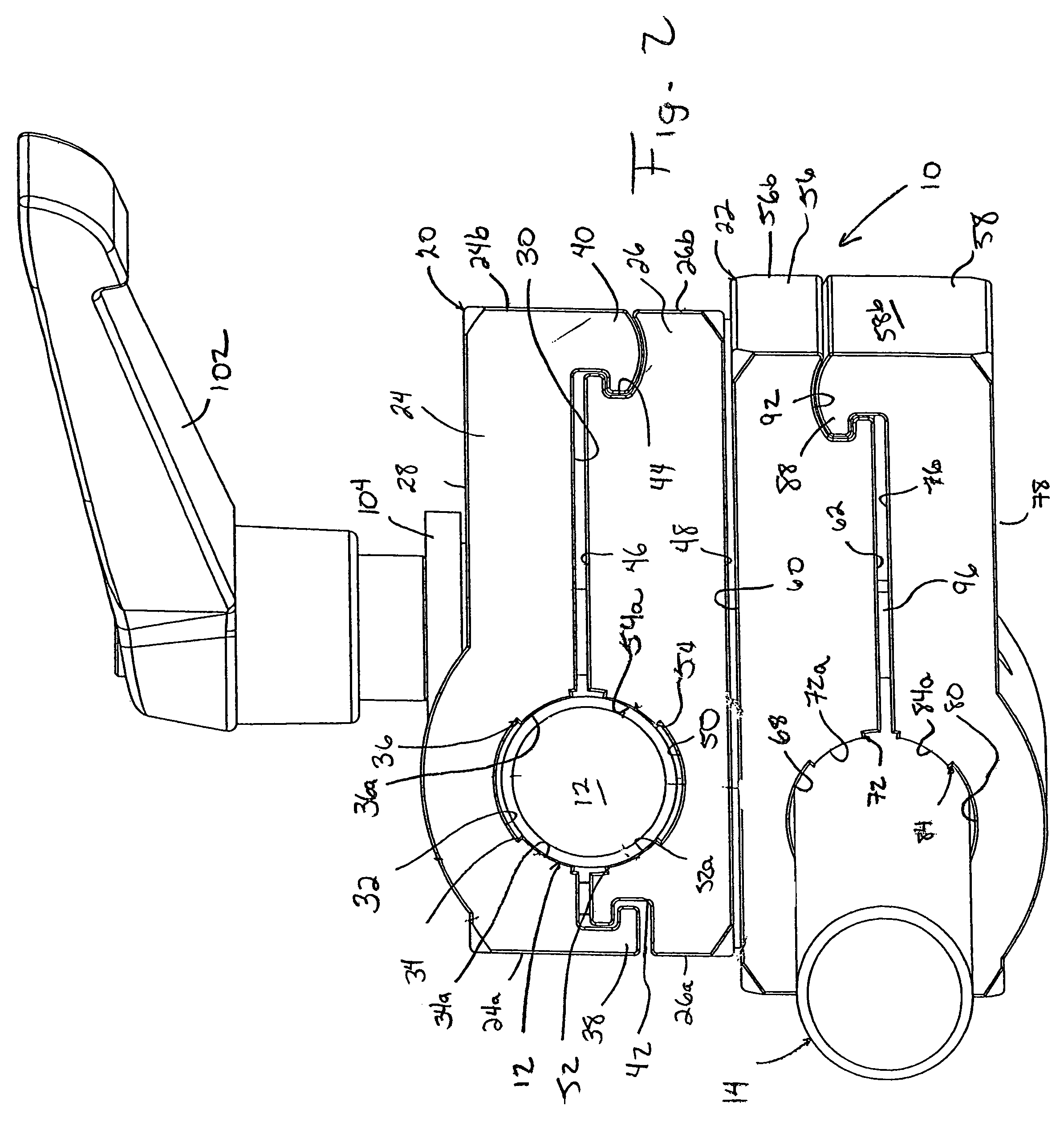Clamping mechanism for folder gluer machine
a folder gluer machine and clamping mechanism technology, applied in the field of folder gluer machines, can solve the problems of inconvenient operation, inconvenient clamping mechanism, and difficulty in accurately positioning and clamping the tools of the folder gluer machine with the prior clamping mechanism, and achieve the effect of simple operation and low manufacturing cos
- Summary
- Abstract
- Description
- Claims
- Application Information
AI Technical Summary
Benefits of technology
Problems solved by technology
Method used
Image
Examples
Embodiment Construction
[0023]Referring to FIG. 1, a clamping mechanism in accordance with the present invention is generally designated by the reference numeral 10. Clamping mechanism 10 is intended to support first and second tools 12 and 14, respectively, for use in a folder gluer machine. As is conventional, each tool 12 and 14 extends along a corresponding axis 16 and 18, respectively. By way of example, tools 12 and 14 may take the form of folding guides, finger hooks, plows, swords and / or glue applicators. However, other tools may be supported by clamping mechanism 10 without deviating from the scope of the present invention.
[0024]Referring to FIG. 2, clamping mechanism 10 includes upper clamp 20 and lower clamp 22. Upper clamp 20 includes an upper clamping element 24 and a lower clamping element 26 for receiving tool 12 therebetween. Upper clamping element 24 of upper clamp 20 includes outer surface 28 and inner surface 30. Inner surface 30 has an arcuate surface portion 32 therein that partially d...
PUM
 Login to View More
Login to View More Abstract
Description
Claims
Application Information
 Login to View More
Login to View More - R&D
- Intellectual Property
- Life Sciences
- Materials
- Tech Scout
- Unparalleled Data Quality
- Higher Quality Content
- 60% Fewer Hallucinations
Browse by: Latest US Patents, China's latest patents, Technical Efficacy Thesaurus, Application Domain, Technology Topic, Popular Technical Reports.
© 2025 PatSnap. All rights reserved.Legal|Privacy policy|Modern Slavery Act Transparency Statement|Sitemap|About US| Contact US: help@patsnap.com



